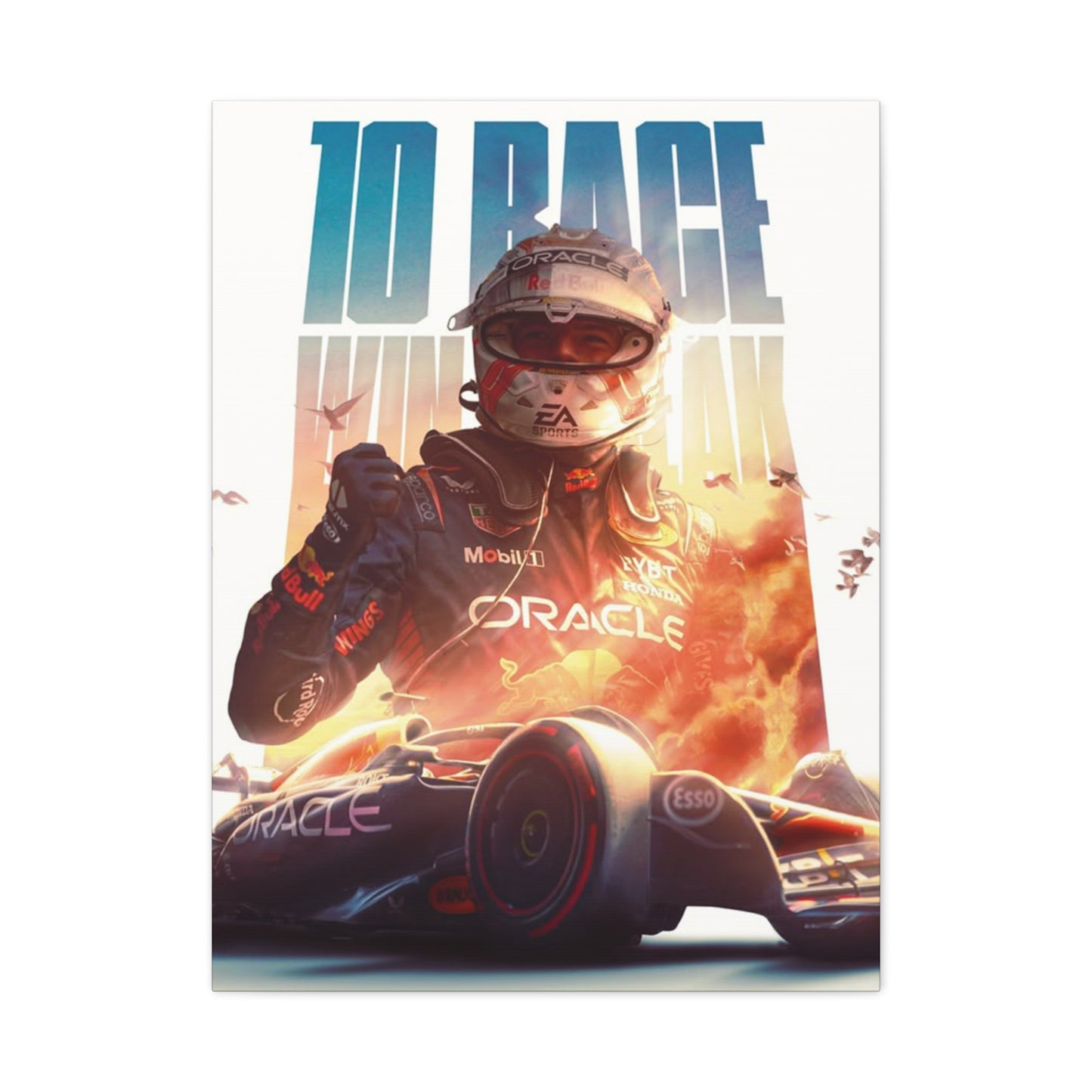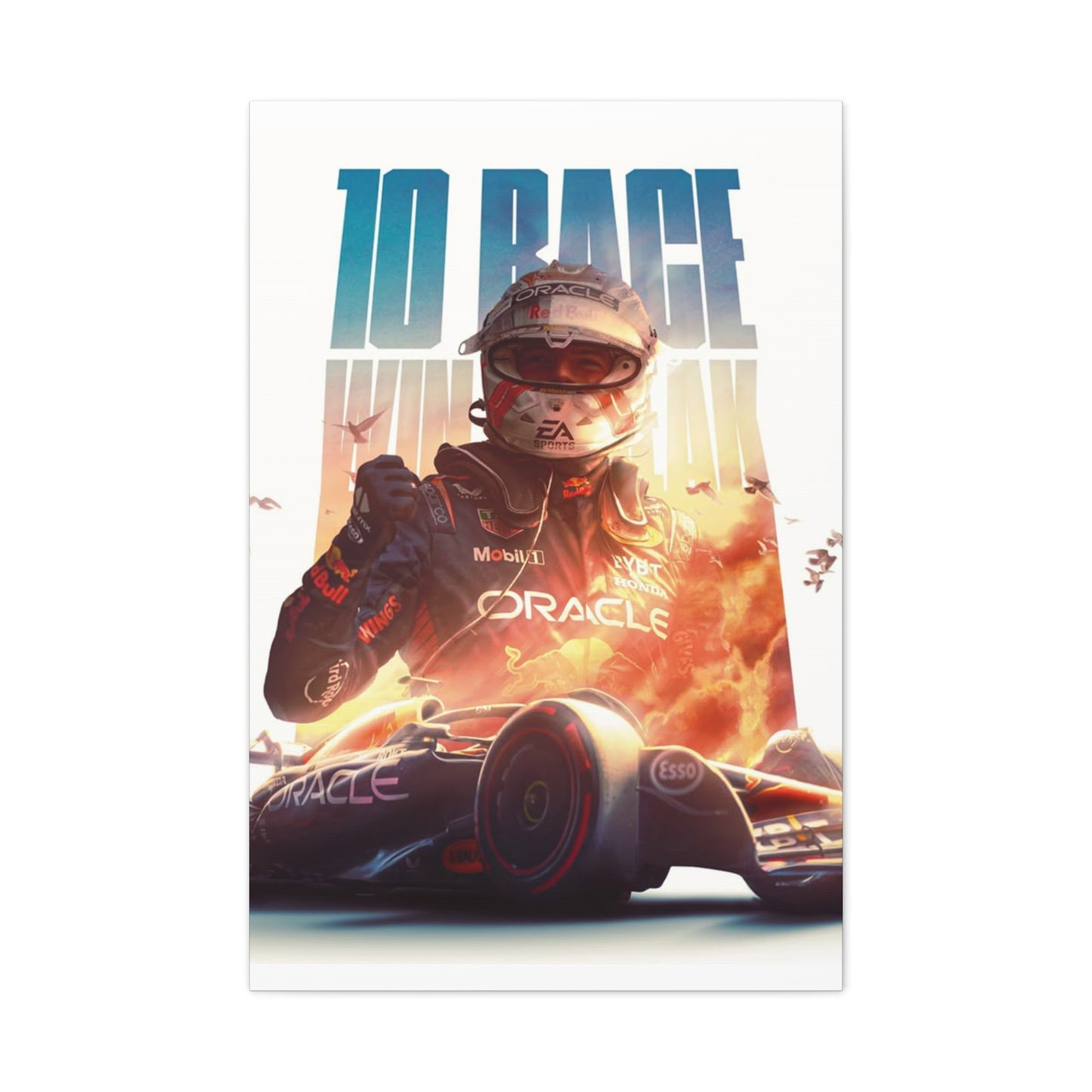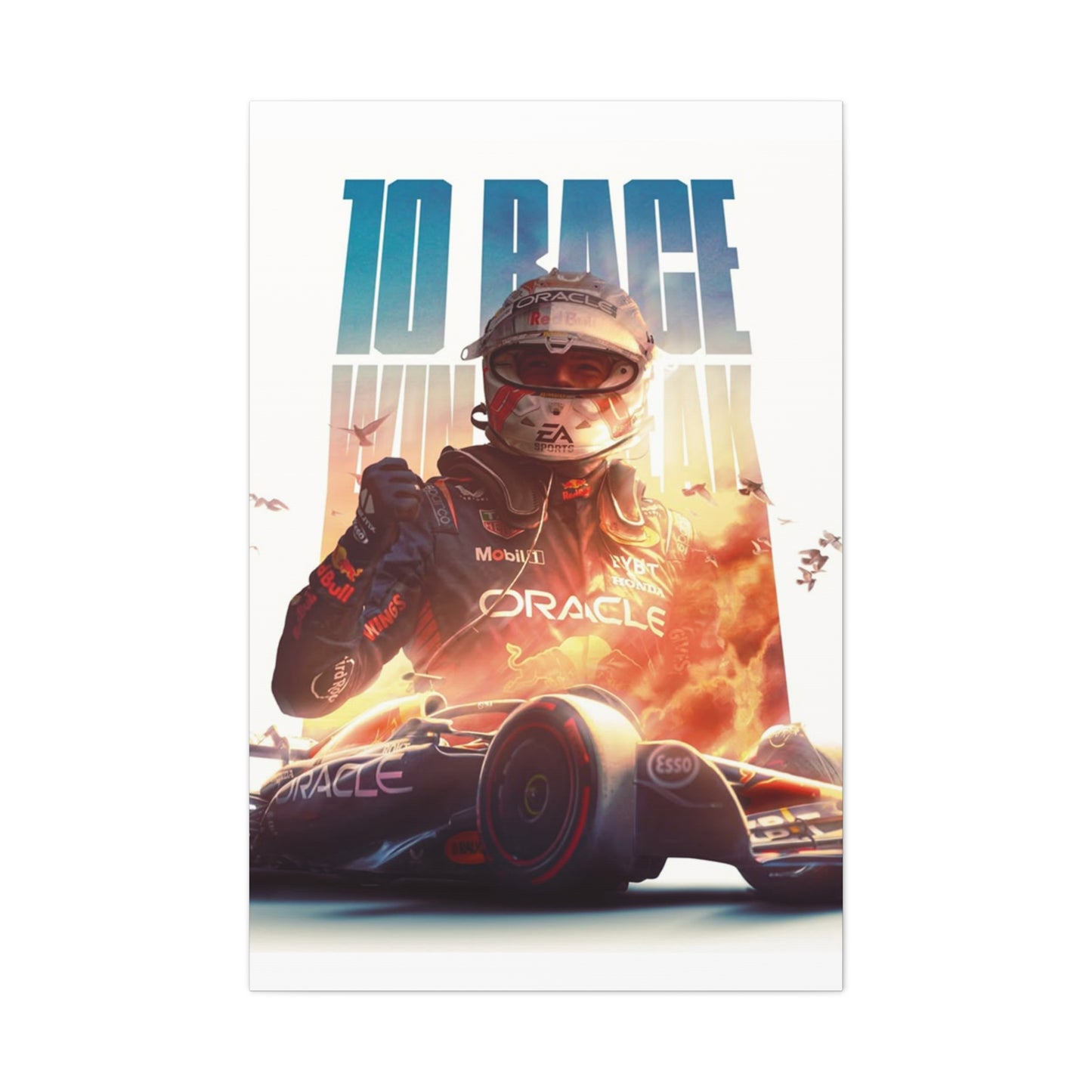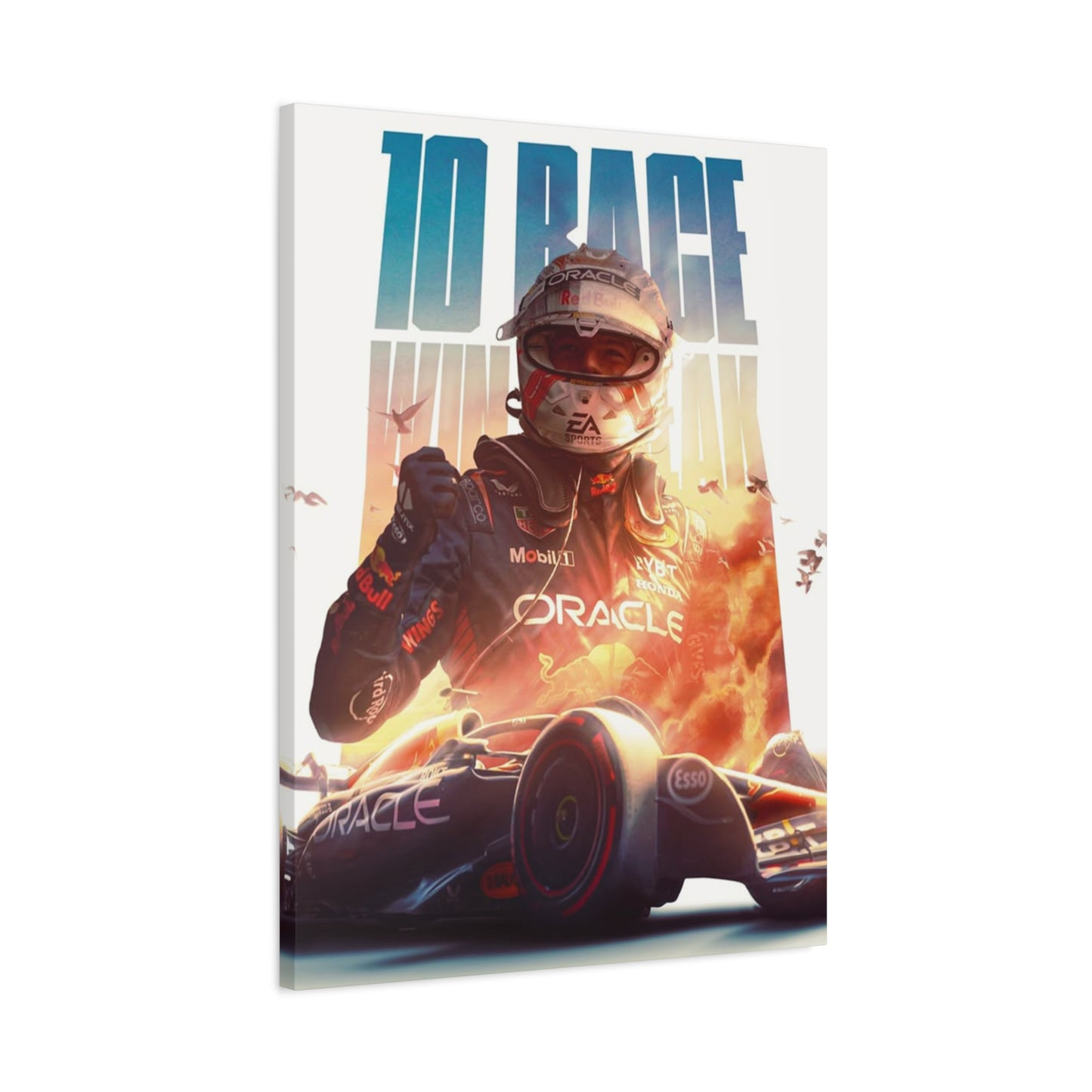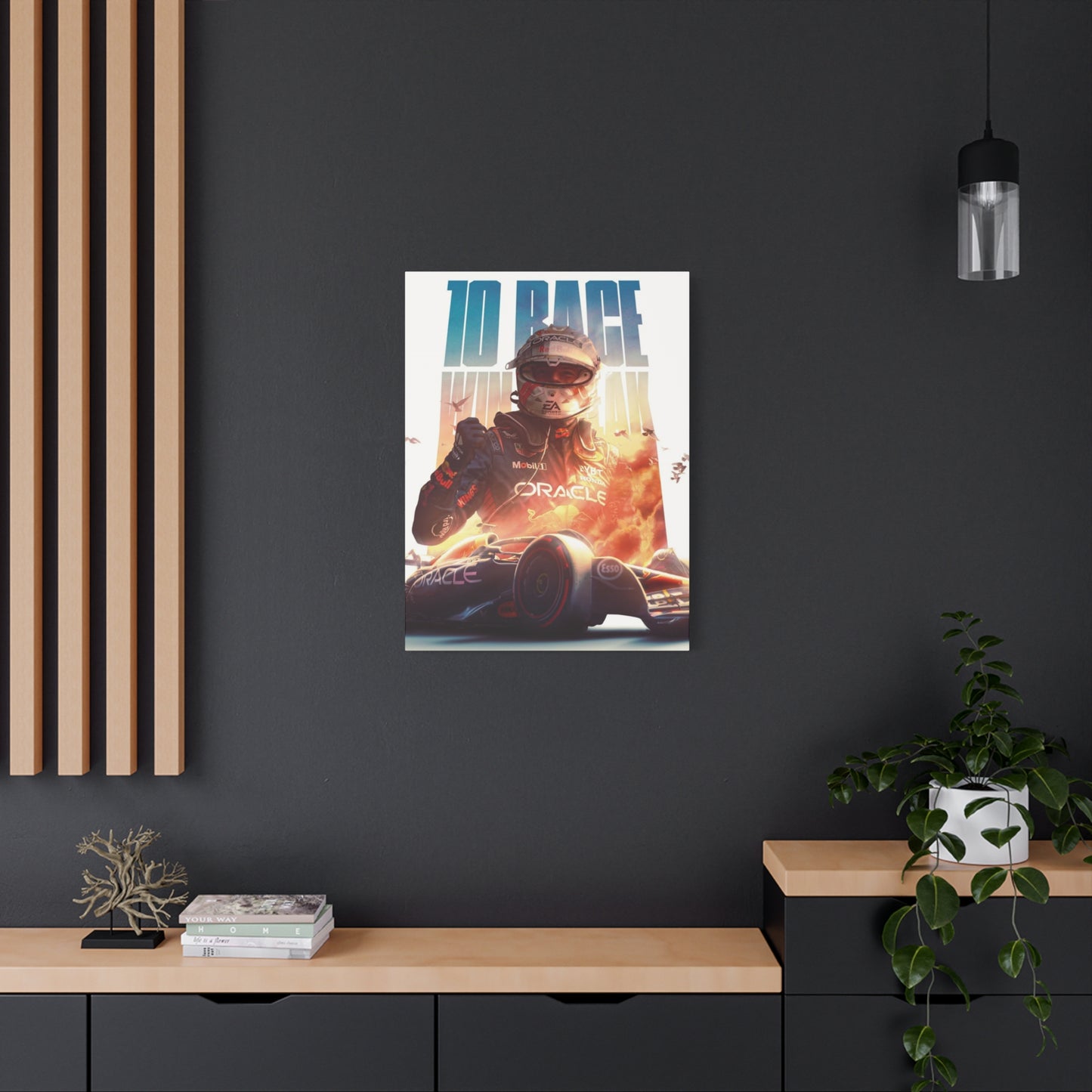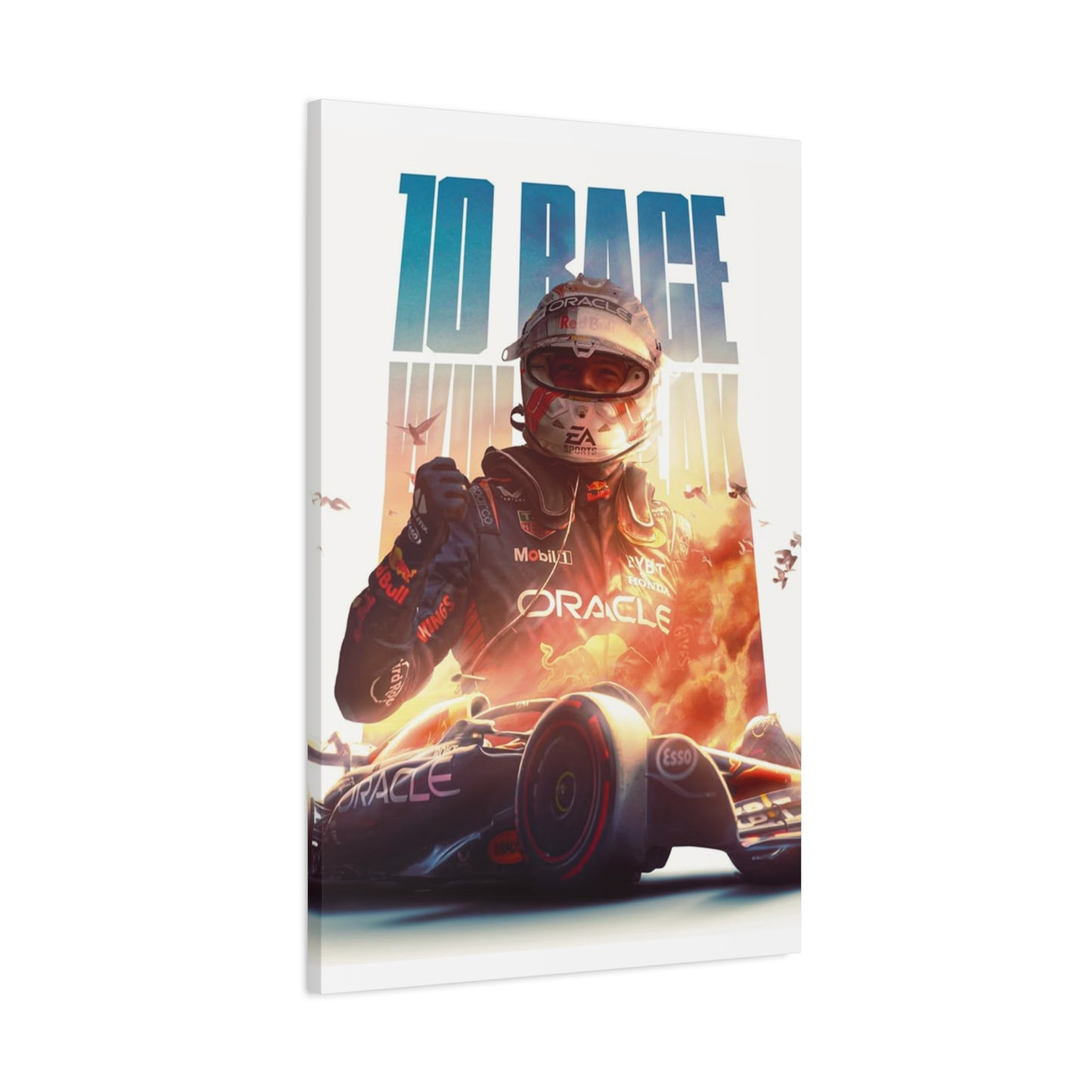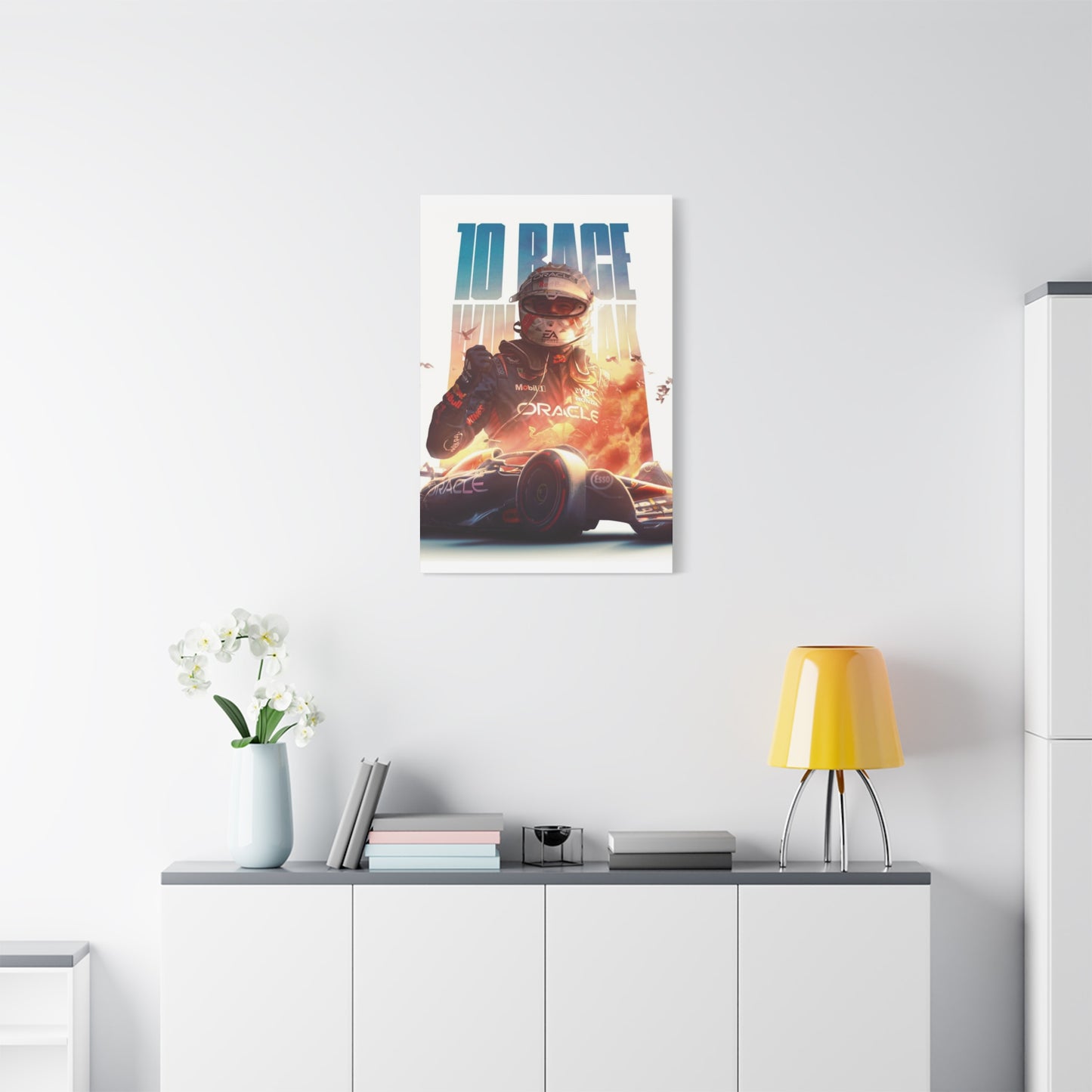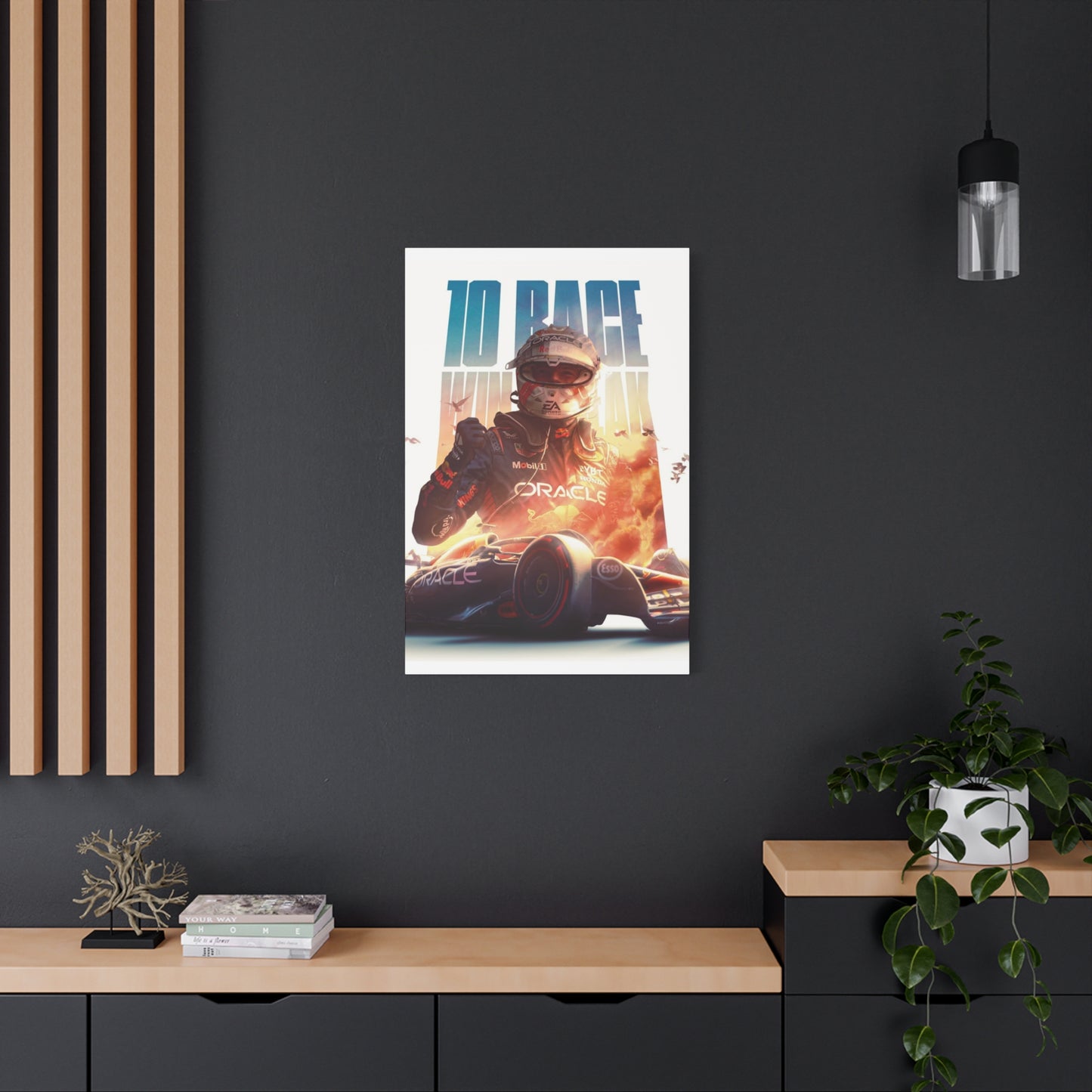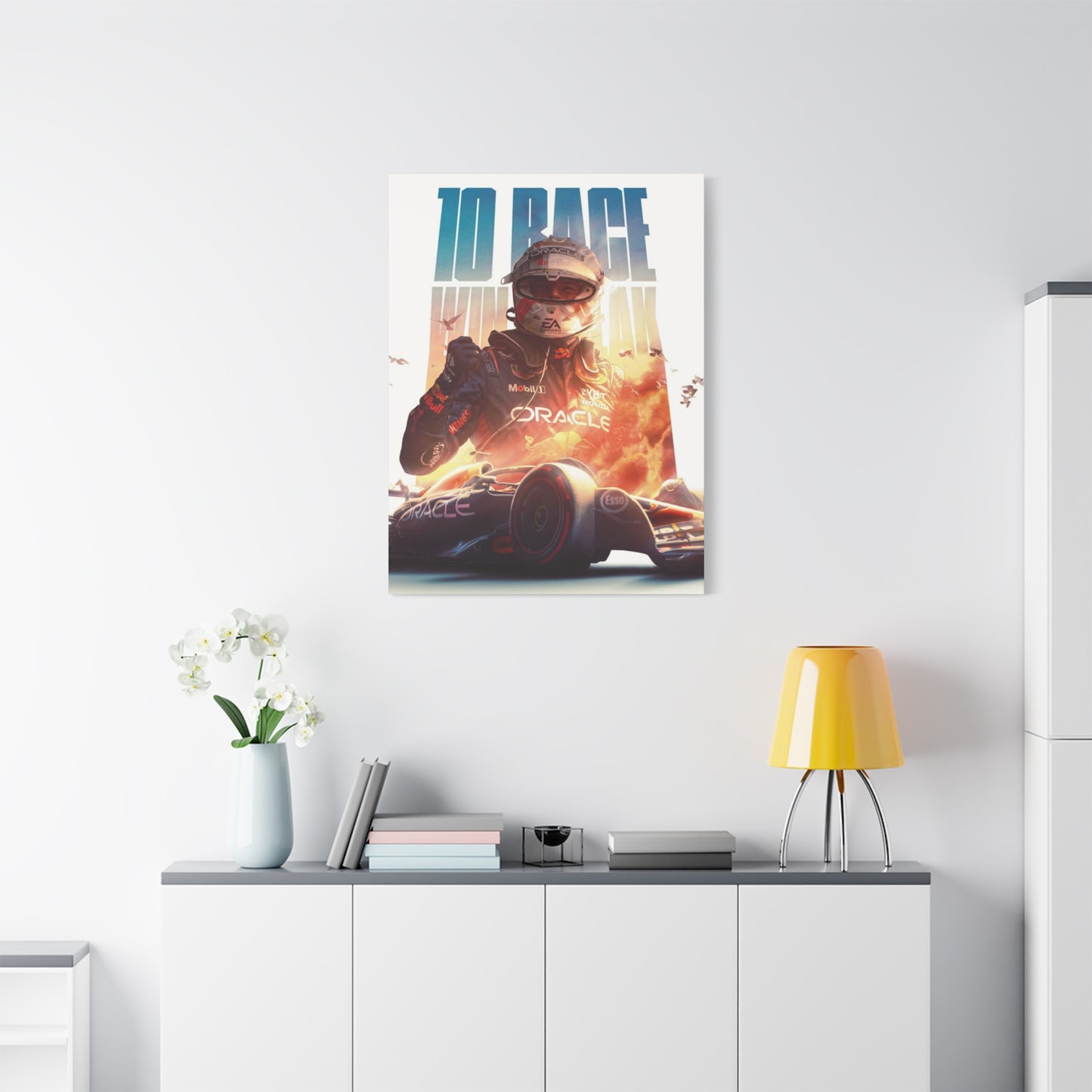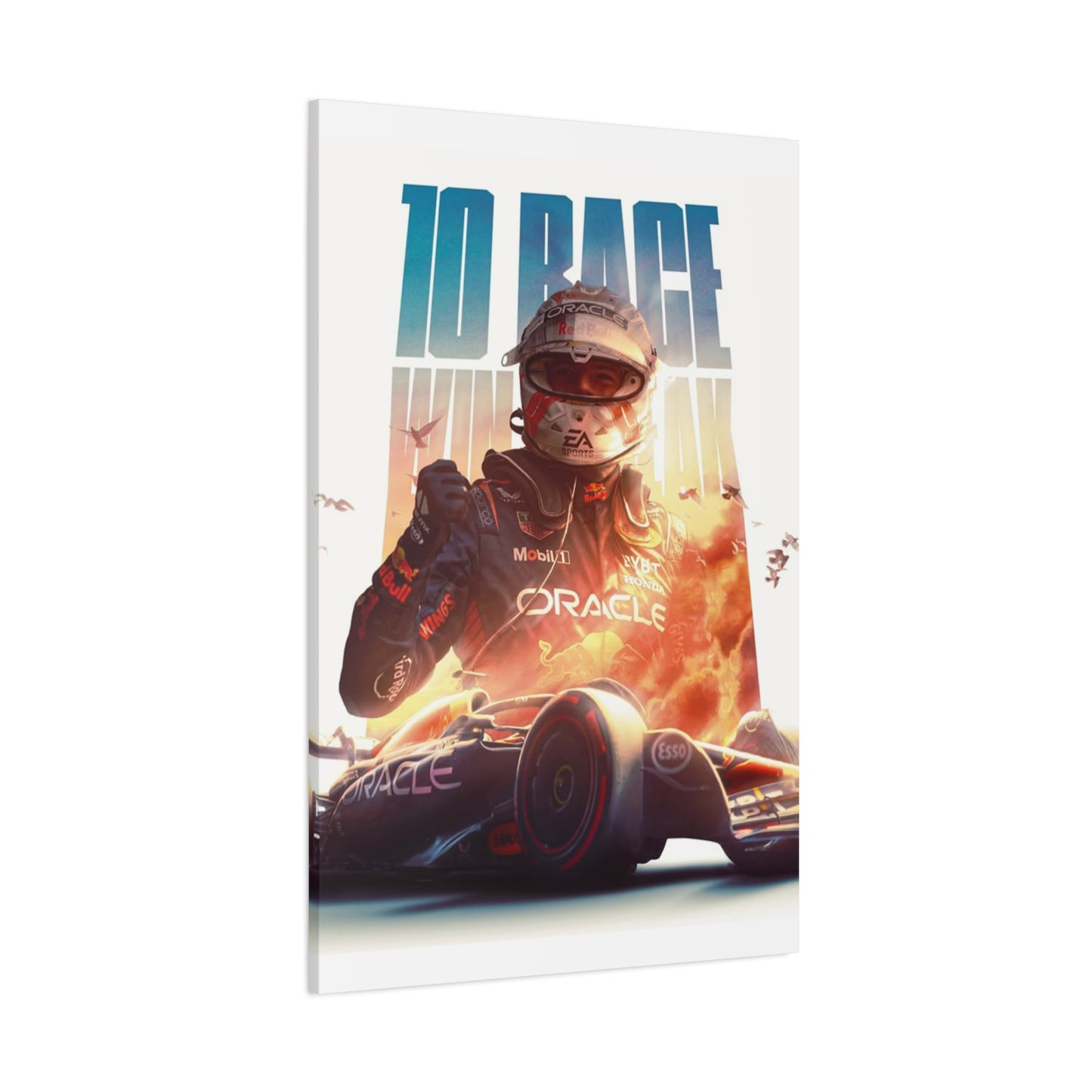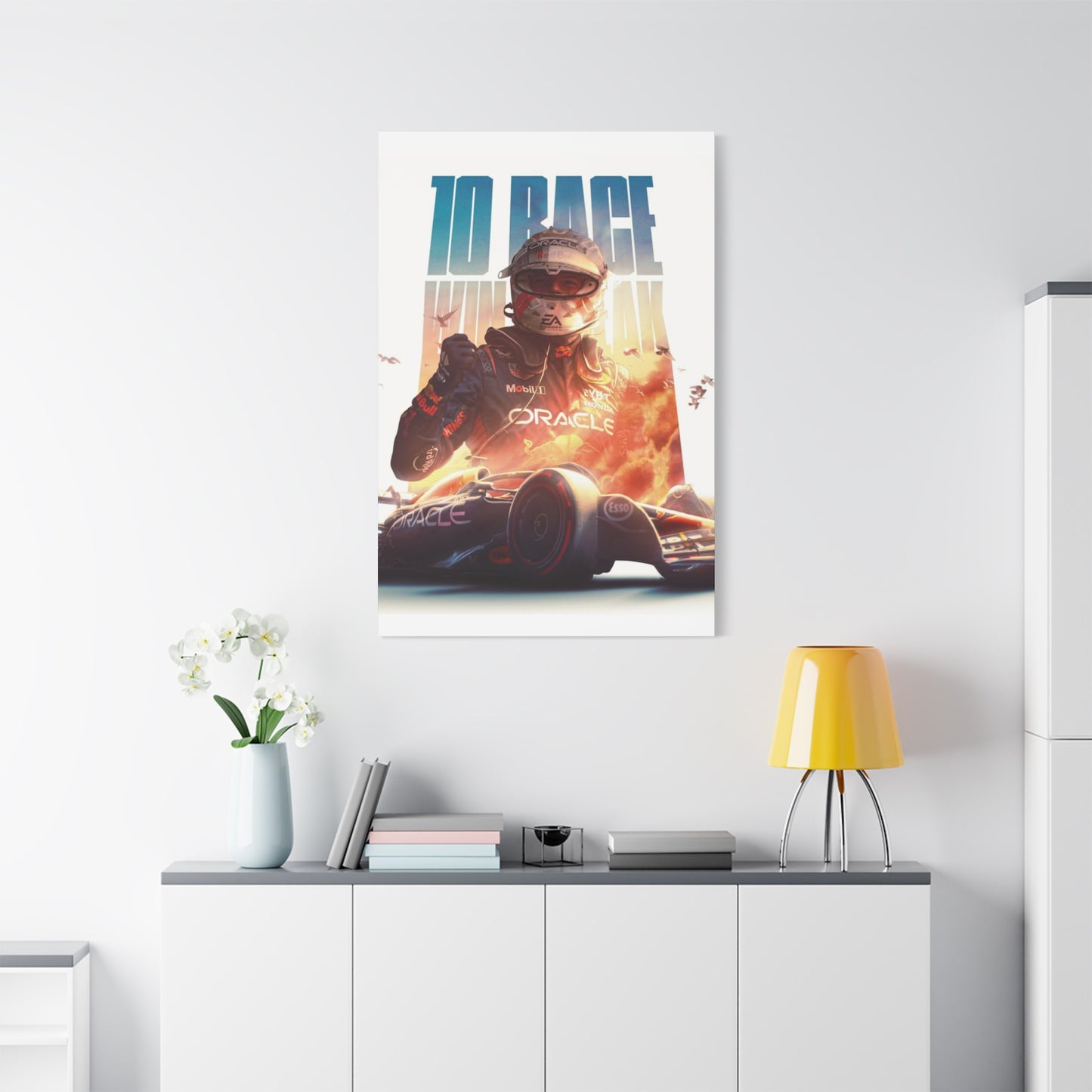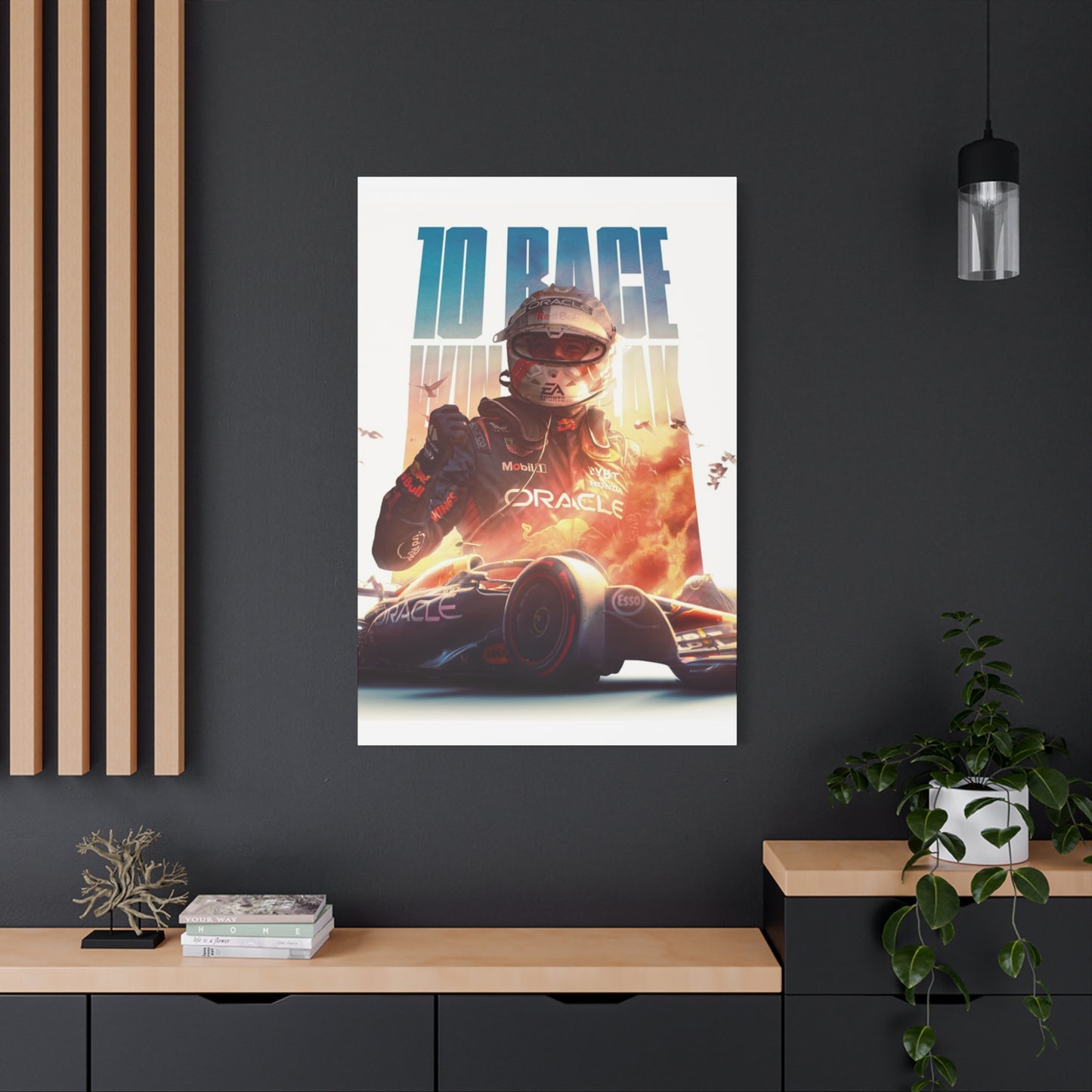The Art of Apex: Your Ultimate Guide to F1 Poster Wall Art
Formula 1 is more than just a sport; it is a symphony of speed, sound, and strategy. It’s the visceral scream of a hybrid engine at full throttle, the breathtaking precision of a 2-second pit stop, and the human drama of legendary rivalries played out at over 200 miles per hour. It’s a global spectacle of cutting-edge technology and gladiatorial courage. On a Thursday night here in Faisalabad, thousands of miles from the storied tracks of Spa or Monza, the global passion for Formula 1 is as alive as ever. For fans around the world, the race weekend is a ritual, and the love for the sport extends far beyond the television screen. It's a passion that deserves a place on our walls.
F1 poster wall art is the bridge that connects the adrenaline of the racetrack to the personal sanctuary of our homes. It’s a way to celebrate the heroes, the machines, and the unforgettable moments that make this sport so compelling. But these posters are no longer just the simple, glossy pin-ups of a bygone era. Today's F1 wall art is a sophisticated and diverse genre, encompassing everything from vintage-inspired graphic design and stark minimalism to breathtaking action photography and abstract interpretations of speed. This guide will serve as your complete resource, exploring the best types of F1 posters, the evolution of their design, and—most importantly—how to style them to create a space that truly reflects your passion for the pinnacle of motorsport.
Best F1 Poster Wall Art for Racing Fans
For a true Formula 1 enthusiast, choosing a poster is about more than just finding a cool picture of a car; it's about capturing a specific facet of the sport that resonates with their passion. The "best" F1 poster is a deeply personal choice, but the options can be broadly categorized to help any fan find their perfect piece. Understanding these categories is the first step to curating a collection that tells a story.
1. The Driver-Centric Poster: For many, F1 is about the heroes in the cockpit. These posters celebrate the skill, charisma, and legacy of the drivers. You can find art dedicated to the all-time greats like Ayrton Senna, Michael Schumacher, or Niki Lauda, often depicted in an iconic moment or a thoughtful pose. Contemporary options celebrate current superstars like Lewis Hamilton, Max Verstappen, or Charles Leclerc. These posters can be action shots of them navigating a corner, celebratory moments on the podium, or artistic portraits that aim to capture their personality. This type of art is for the fan who connects with the human element of the sport—the rivalries, the triumphs, and the tragedies.
2. The Car as the Star: For others, the engineering marvel of the F1 car is the main attraction. These posters focus on the breathtaking aesthetics and technical prowess of the machines themselves. You might choose a poster that showcases the sleek aerodynamics of a modern Mercedes or Red Bull, a detailed schematic or blueprint of a classic car, or a beautifully shot image of a legendary car like the McLaren MP4/4 or the Ferrari F2004. This category is perfect for fans who appreciate the design, technology, and evolution of F1 engineering.
3. The Iconic Track Map: F1 is a global sport, and its legendary circuits are characters in their own right. Posters featuring the layouts of tracks like Monaco, Silverstone, Spa-Francorchamps, or Monza are a sophisticated and popular choice. These can range from minimalist, graphic representations of the track's shape to more detailed maps that include corner names and statistics. A track map poster is a subtle nod to the sport, a piece of art that is recognizable to fellow fans but can also be appreciated for its pure geometric beauty by anyone.
4. The Team Spirit Poster: Loyalty in F1 runs deep. Team-focused posters are for the die-hard fans—the Tifosi who bleed Ferrari red or the members of the Orange Army supporting McLaren. These posters typically feature the team's cars, drivers, and iconic livery in a dynamic composition. They are a bold declaration of allegiance and a celebration of a team's history and identity.
Choosing the best poster means identifying which of these pillars of F1—the drivers, the cars, the tracks, or the teams—excites you the most. A great collection often includes a mix, creating a well-rounded tribute to the multifaceted world of Formula 1.
Celebrate Speed: F1 Poster Art for Your Walls
Formula 1's entire existence is predicated on one fundamental concept: speed. Capturing this intangible, fleeting quality in a static, two-dimensional image is the ultimate challenge and achievement of a great F1 poster. Artists and photographers use a variety of powerful visual techniques to trick our eyes and minds into perceiving motion, allowing us to feel the blistering pace of the cars from the comfort of our own homes.
One of the most effective techniques is the use of motion blur. A photograph taken with a slow shutter speed while "panning" with a moving car results in a sharp, focused subject against a beautifully blurred and streaked background. This immediately conveys a sense of immense velocity. The car appears as a fleeting moment of clarity in a world that is rushing by. This style of poster is incredibly dynamic, making the viewer feel as though they are right there on the side of the track, watching the car blast past.
Another powerful tool is the use of dynamic and converging lines. Artists often use graphic elements—streaks of color, speed lines, or distorted perspectives—that emanate from the car or converge towards a vanishing point. These lines guide the viewer's eye through the composition, creating a powerful sense of forward momentum. An abstract poster might forego a realistic car altogether, using only a cascade of colored lines representing a team's livery to represent the car's path and velocity around a corner.
The angle of the shot or illustration is also crucial. A low-angle perspective, looking up at the car, can make it feel more powerful, aggressive, and faster as it crests a hill or flies over a curb. A head-on shot of a car entering a corner, with its tires straining and body rolling, captures the violent energy of high-speed maneuvering. Posters depicting the slipstream—the turbulent air behind a car—or the heat haze rising from the engine and tarmac can also add to the atmosphere of intense speed and power.
Finally, the depiction of light is used to celebrate speed, especially in night races like those in Singapore or Bahrain. Posters that capture the streaking trails of headlights and taillights can transform the cars into abstract comets of light, painting a picture of speed that is both beautiful and electrifying. When selecting a poster to celebrate speed, look for these visual cues. The best pieces don't just show you a car; they make you feel its movement.
F1 Wall Art That Captures the Thrill of the Track
While speed is the physical essence of F1, the thrill is its emotional core. The thrill is not just about velocity; it's about the competition, the risk, the split-second decisions, and the moments of high drama that define a race. The most compelling F1 wall art captures these moments, telling a story of the intense human and mechanical struggle that unfolds on the track.
One of the most thrilling moments in any race is the overtake. A poster that depicts two cars running wheel-to-wheel, with one driver making a daring move on the inside of a corner, is the epitome of F1 drama. The tension in these images is palpable. You can almost feel the immense concentration of the drivers and the fine line between a brilliant pass and a disastrous collision. These artworks celebrate the gladiatorial aspect of the sport, the pure racing combat that fans adore.
The start of the race is another moment of peak excitement. A poster capturing the grid of 20 cars launching off the line, engines roaring and tires smoking, is a visual explosion of potential and aggression. It's a moment of contained chaos, the beginning of the story, and it makes for an incredibly energetic piece of wall art. Similarly, a shot of the first corner, where cars bunch up and fight for position, is always full of drama.
The pit stop represents another kind of thrill—the thrill of precision and teamwork. A poster that freezes the controlled frenzy of a pit stop, with the car jacked up and a swarm of mechanics changing tires in perfect synchronicity, is a tribute to the unsung heroes of the sport. It's a celebration of the incredible efficiency and "blink and you'll miss it" speed that happens off the main straight.
And then there is the emotional climax: the podium celebration. An image of a driver hoisting a trophy, drenched in champagne, is a picture of pure, unadulterated joy and relief. It's the culmination of a weekend of immense pressure and effort. This type of poster captures the human side of victory, the emotional payoff that makes all the risk worthwhile.
Finally, the thrill is amplified by the elements. A poster of a driver like Ayrton Senna, masterfully navigating a rain-soaked track with spray erupting from the tires, speaks to the immense skill and bravery required to race at the limit. When choosing art that captures the thrill, look for these narrative moments. Look for the story in the image—the battle, the precision, the victory, the mastery—and you'll find a piece that resonates with the true heart of Formula 1.
The Evolution of F1 Poster Design
F1 poster design has a rich and fascinating history that mirrors the evolution of the sport itself, as well as broader trends in graphic design and advertising. From the romantic, hand-illustrated art of the post-war era to the slick, data-driven graphics of today, these posters provide a visual timeline of Formula 1's journey from a niche European pastime to a global entertainment juggernaut.
The Golden Age (1950s - 1970s): In the early days of the World Championship, race posters were works of art in their own right. They were primarily promotional materials for the Grands Prix, designed to lure spectators to the track. These posters were created by talented artists and illustrators, not marketing agencies. They featured beautiful, often romanticized paintings of cars in action, set against the backdrop of iconic locations like Monaco or Monza. The typography was elegant and expressive, and the focus was on capturing the glamour, speed, and danger of the sport. These vintage posters, with their Art Deco and modernist influences, are now highly sought-after collectibles.
The Sponsorship Era (1980s - 2000s): As Formula 1 grew in popularity and commercialism, poster design began to change. The rise of massive sponsorship deals, particularly from tobacco companies like Marlboro and Camel, heavily influenced the aesthetic. Photography began to replace illustration as the dominant medium. Posters from this era are often characterized by dynamic action shots of cars plastered with iconic liveries. The design became more about brand promotion than pure art. The driver was a hero, but they were also a billboard. While perhaps less "artistic" in the traditional sense, these posters are iconic in their own right, capturing the bold, commercialized, and often controversial spirit of the time.
The Digital and Graphic Design Era (2010s - Present): In the modern era, poster design has experienced a creative renaissance. With the rise of social media, teams and F1 itself now release unique digital posters for every single race weekend. These are created by talented graphic designers and are often highly conceptual. A poster for the Japanese Grand Prix might incorporate elements of traditional Japanese art, while one for the Las Vegas race might use neon and casino-inspired typography. There is a renewed focus on artistry, with teams using these posters to build their brand identity and engage with fans. This era is defined by its diversity, with styles ranging from stark minimalism and bold typography to complex digital illustrations and photo manipulations. This evolution shows F1 posters coming full circle, once again being celebrated as a creative and artistic medium.
Retro F1 Posters for a Vintage Vibe
There is a timeless allure to retro F1 posters, a nostalgic charm that transports you back to the "golden age" of motorsport. This was an era of raw power, mechanical simplicity, and undeniable glamour, and the posters from this period perfectly capture that spirit. Incorporating retro F1 posters into your home decor is a way to infuse your space with a sense of history, sophistication, and a cool, vintage vibe that never goes out of style.
The appeal of retro posters, primarily those from the 1950s to the 1970s, lies in their handcrafted, artistic quality. Before the age of digital design and photographic dominance, these posters were created by illustrators and painters. This gives them a warmth and personality that is often missing from modern, computer-generated graphics. The brushstrokes are visible, the colors are rich and painterly, and the compositions are thoughtfully designed to be works of art. They were created to be beautiful objects in their own right.
The typography on these posters is a key element of their charm. Designers used elegant, often flamboyant, script fonts and bold, sans-serif typefaces that were characteristic of the era. The text wasn't just information; it was a central part of the artistic composition, adding to the poster's overall sense of style and dynamism.
The color palettes of vintage posters are also distinctive. They often feature muted, sophisticated colors—deep blues, rich reds, racing greens, and creamy off-whites—that are less saturated than today's neon-hued liveries. This gives them a softer, more atmospheric feel that is very easy to integrate into a home decor scheme. They add a touch of color without being overwhelming.
When styling with retro F1 posters, you can fully lean into the vintage aesthetic. Pair them with mid-century modern furniture, such as a leather Eames-style lounge chair or a teak sideboard. The clean lines of this furniture style complement the classic design of the posters perfectly. A simple, high-quality wood or thin black metal frame will enhance the artwork without distracting from it.
These posters are not just for die-hard F1 historians. Their artistic merit transcends the subject matter. A classic poster for the Monaco Grand Prix, with its beautiful illustration of a car racing past the harbor, can be appreciated as a stunning piece of travel and design art, even by those who don't follow the sport. By choosing a retro F1 poster, you are bringing home more than just a piece of memorabilia; you are acquiring a piece of design history.
Minimalist F1 Wall Art Ideas
In a world of visual noise, minimalism offers a moment of calm and clarity. Minimalist F1 wall art applies this "less is more" philosophy to the high-octane world of motorsport, stripping away the clutter to focus on the pure, essential elements of the sport. This style is perfect for modern homes, sophisticated office spaces, and for fans who appreciate a more subtle and design-led approach to showing their passion.
One of the most popular forms of minimalist F1 art is the abstract track map. These pieces reduce legendary circuits like Spa or Suzuka to their most basic geometric form—a single, elegant line tracing the path of the track. Presented in a simple black-on-white or white-on-black color scheme, these posters are a chic and understated tribute to the sport. They are instantly recognizable to those in the know, but to others, they appear as a beautiful piece of abstract graphic art. This makes them incredibly versatile and sophisticated.
Another approach is to focus on the silhouette of the car. A minimalist poster might feature a simple, clean-line drawing of an iconic F1 car's profile, using negative space to define its form. There are no sponsors, no complex details—just the pure, aerodynamic shape of the machine. This style celebrates the beauty of F1 engineering and design in its most fundamental form.
Color is used very intentionally in minimalist F1 art. A poster might consist of three simple vertical or horizontal stripes of color representing a team's iconic livery (e.g., the blue, orange, and white of Gulf, or the red and white of classic McLaren-Honda). There is no car or text, but the color combination is so iconic that it's instantly identifiable to a fan. This is a highly abstract and artful way to show team allegiance.
Typography can also be the sole focus. A minimalist poster might feature just the name of a legendary driver, a famous corner like "Eau Rouge," or a simple, powerful word like "SPEED," rendered in a clean, modern font. The beauty comes from the elegance of the letterforms and the careful use of spacing and layout.
Minimalist F1 art is the antithesis of the loud, sponsor-heavy posters of the past. It's quiet, confident, and intellectual. It celebrates the core components of the sport—the tracks, the cars, the colors—as elements of pure design. This makes it a perfect choice for the discerning fan who wants to integrate their passion into their home in a stylish and contemporary way.
Iconic F1 Moments Captured in Poster Form
Formula 1's history is not just a collection of statistics and race results; it's a rich tapestry of unforgettable moments, epic battles, and human drama. Posters that capture these specific, iconic moments are some of the most powerful and evocative pieces of F1 art. They are for the true connoisseur of the sport, the fan who appreciates the stories behind the races. These posters transform a simple image into a historical document, a tribute to a moment that changed the sport forever.
What makes a moment iconic? It's often a combination of extraordinary skill, high stakes, and dramatic context. Think of Ayrton Senna's legendary opening lap at Donington in 1993, where he overtook four cars in the pouring rain to go from fifth to first. A poster depicting his McLaren, drenched in spray, masterfully navigating the treacherous conditions, is not just a picture of a car; it's a portrait of genius. It captures a moment that is universally regarded as one of the greatest laps in F1 history.
Rivalries produce a wealth of iconic moments. The fierce battle between James Hunt and Niki Lauda, immortalized in the film Rush, provides endless inspiration. A poster showing their two cars side-by-side, fighting for the 1976 championship, is a snapshot of one of the sport's most compelling narratives. Similarly, the intense and often bitter rivalry between Senna and Alain Prost created numerous iconic clashes that are frequently celebrated in art.
Championship-deciding moments are another fertile ground. A poster of Lewis Hamilton crossing the line at the chaotic 2008 Brazilian Grand Prix to win his first world title on the final corner of the final lap is a picture of destiny fulfilled. An image of Michael Schumacher celebrating his record-breaking seventh championship is a tribute to an era of unparalleled dominance. These posters capture the raw emotion of achieving a lifelong dream.
Sometimes, the moment is one of pure, unexpected magic, like Gilles Villeneuve and René Arnoux's wheel-banging duel at the 1979 French Grand Prix, a battle so fierce and fair that it has become the benchmark for hard racing. Other times, it's a symbolic moment, like the first win for a legendary team or a driver's final race.
When you hang a poster of an iconic F1 moment, you are doing more than just decorating a wall. You are curating a personal F1 museum. It's a way to honor the sport's legends and to keep its greatest stories alive, sparking conversations and inspiring awe in anyone who sees it.
The Art of Speed: F1 Posters as Statement Pieces
A statement piece is the anchor of a room's design—a bold, captivating element that immediately draws the eye and sets the tone. While F1 posters have sometimes been relegated to the category of casual memorabilia, a carefully chosen, large-scale, and high-quality print can absolutely function as a sophisticated and powerful statement piece. This elevates the poster from a simple fan item to a genuine work of art that can define a space.
The key to turning an F1 poster into a statement piece is scale. A small, standard-sized poster can be a nice accent, but an oversized print—one that is several feet wide or tall—has an immersive, theatrical quality. A massive, wall-filling image of an F1 car at speed or a dramatic shot from a legendary race creates an undeniable impact. It transforms the wall into a window onto the racetrack, filling the room with the energy and drama of the sport. This is particularly effective in large spaces with high ceilings or on a long, empty feature wall.
Quality is non-negotiable. For a poster to be a statement piece, it must be of exceptional quality. This means a high-resolution image printed on premium, archival-grade paper or canvas. The colors should be deep and saturated, the details crisp and clear. A cheap, pixelated print will never achieve the desired effect. Investing in a gallery-quality print ensures that the artwork has a visual weight and permanence that commands respect.
The composition of the image is also crucial. A true statement piece has a strong, artistic composition. It could be a powerful abstract interpretation of speed, a beautifully composed photograph with a strong sense of light and shadow, or a graphically bold vintage design. The image should be compelling enough to be appreciated for its artistic merit alone, even by someone who is not an F1 fan. This is what elevates it from sports memorabilia to art.
Presentation, specifically framing, is the final element. A statement piece deserves a statement frame. A high-quality, custom frame—whether it's a sleek and modern floating frame for a canvas or a classic gallery frame with a wide mat for a print—signals that this piece is important. It gives the artwork a finished, polished look and separates it from a casual pin-up.
By embracing scale, demanding quality, choosing an artistic composition, and investing in proper presentation, an F1 poster can transcend its subject matter. It becomes "The Art of Speed," a dynamic and sophisticated centerpiece that makes a bold declaration about your passion and your eye for design.
Abstract F1 Wall Art for Modern Spaces
For the F1 fan with a modern, minimalist, or art-forward design sensibility, a literal photograph of a car might feel too on-the-nose. Abstract F1 wall art offers a sophisticated and contemporary alternative. This genre moves beyond direct representation to capture the sensation and emotion of the sport through the pure language of color, form, and line. It's a way to celebrate F1 that is less about the specifics and more about the feeling.
Abstract F1 art often focuses on conveying the concept of speed in its purest form. An artist might use a technique called "drip painting" or "action painting," using the iconic colors of a team's livery—like the silver and teal of Mercedes or the papaya orange of McLaren—and applying them to the canvas in a dynamic, sweeping motion. The resulting artwork is a chaotic yet beautiful explosion of color that perfectly captures the feeling of a car blurring past at incredible velocity. There is no car in the image, but the spirit of the car is undeniably present.
Another common approach is to deconstruct the visual elements of the sport into geometric forms. An artist might take inspiration from the flowing curves of a specific racetrack, the sharp angles of a car's aerodynamic wings, or the checkered pattern of the finish flag, and distill them into a balanced composition of shapes and colors. This style of art celebrates the design and engineering of F1 in a highly intellectual and artistic way, appealing to those who appreciate both motorsport and design theory.
Light and color are central to abstract F1 art. A piece might focus on the reflection of light off a driver's helmet, breaking it down into a prism of different colors. Another might capture the experience of a night race, depicting the cars as nothing more than long, brilliant streaks of red, white, and yellow light against a dark background. This transforms the race into a beautiful, celestial event, a ballet of light in the darkness.
Abstract F1 art is the perfect choice for a modern space because it prioritizes form and feeling over literal subject matter. It can be appreciated on multiple levels: as a dynamic piece of abstract expressionism by any viewer, and as a clever and subtle tribute to the sport by those in the know. It’s a way to integrate your passion for F1 into your home in a way that feels like it belongs in a contemporary art gallery.
Bold Typography in F1 Poster Designs
In the world of graphic design, typography—the art of arranging text—is a powerful tool. It can convey not just information, but also mood, personality, and energy. In F1 poster design, bold typography is often a central element, used to capture the power, precision, and heritage of the sport. A poster that uses typography as its main feature is a celebration of the language and iconography of Formula 1.
Historically, racing posters have always had a strong relationship with typography. Vintage posters from the mid-20th century often featured elegant, custom-drawn letterforms that were as much a part of the artwork as the illustration of the car. These fonts had a sense of motion and style, perfectly capturing the glamour of the era. Modern designers often pay homage to this history by using retro-inspired fonts that evoke a sense of nostalgia and classic cool.
In contemporary design, bold, clean sans-serif fonts are frequently used to reflect the modern, high-tech nature of the sport. A poster might feature a simple, powerful word like "MONZA" or "VETTEL" in a massive, impactful font, filling the entire canvas. The clean lines and geometric precision of the font can echo the engineered perfection of an F1 car. The text becomes a visual object in itself, celebrated for its form and structure.
Designers also use typography to convey a sense of speed and motion. This can be achieved by italicizing the text, stretching or distorting the letterforms, or arranging the words on a sharp diagonal axis. This creates a sense of forward momentum, making the text itself feel fast and dynamic. The words appear to be racing across the page.
The content of the text is also key. A poster might feature an iconic quote from a legendary driver, like Niki Lauda or Murray Walker. The power of the words, combined with a strong typographic treatment, can create a piece that is both visually striking and emotionally resonant. Other posters might focus on the technical language of the sport, using terms like "APEX," "DRS," or "POLE POSITION" as their subject.
A typography-focused F1 poster is a sophisticated choice for any fan. It celebrates the sport in a graphic, design-led way, and it's perfect for spaces where a more subtle or minimalist aesthetic is desired. It proves that sometimes, the most powerful image of speed and passion can be built from the simple, elegant forms of the alphabet.
Decorating Game Rooms with F1 Racing Posters
A game room is a space dedicated to fun, escapism, and high-energy entertainment. The decor should reflect this dynamic atmosphere, and F1 racing posters are a perfect way to inject a dose of adrenaline and competitive spirit into the environment. They create a visually stimulating backdrop that enhances the gaming experience, especially for fans of racing simulators and video games.
The primary goal when decorating a game room is to create an immersive experience. If the room features a racing simulator setup—complete with a wheel, pedals, and a dedicated seat—then surrounding the rig with F1 posters is a must. Use posters that depict in-car, driver's-eye-view perspectives or low-angle shots of cars taking on a corner. This helps to create the illusion of being on the track, making the simulation feel more real and intense. A large poster of your favorite track map can also serve as a cool reference point while you're racing.
The energy of F1 art perfectly matches the energy of a game room. Choose posters that are vibrant, action-packed, and full of color. Dynamic shots of overtakes, race starts, or celebratory moments will contribute to the room's high-energy vibe. This is the perfect space for posters with a more modern, graphic, or even slightly futuristic feel. Neon-infused designs or posters for night races can complement the RGB lighting often found in gaming setups, creating a cohesive and exciting look.
Consider creating a "hall of fame" gallery wall featuring posters of your favorite F1 legends alongside posters of iconic characters from your favorite video games. This creates a fun mash-up of your different passions and adds a layer of personal storytelling to the room.
Beyond a racing sim, F1 posters can complement any type of game room. Their universal themes of competition, skill, and victory resonate with the gaming world in general. A stylish, minimalist F1 poster can add a touch of sophisticated cool to a room with a large TV for console gaming or a row of PCs. It elevates the space beyond a simple teenage den, making it feel more like a dedicated and well-designed entertainment hub.
By selecting posters that are dynamic, immersive, and reflective of the high-octane world of both F1 and gaming, you can create a game room that is not just a place to play, but a vibrant and inspiring arena for all your virtual competitions.
Creating an F1 Gallery Wall at Home
A gallery wall is a fantastic way to showcase a collection of F1 posters, turning a blank wall into a dynamic and personal story of your passion for the sport. It's more visually interesting than a single poster and allows you to display a variety of styles, eras, and subjects. Creating a successful F1 gallery wall is all about balance, cohesion, and personal expression.
1. Establish a Unifying Theme: While the overarching theme is "F1," you can narrow it down to create a more curated look.
-
Track Maps: A collection of minimalist track maps from your favorite circuits is a very chic and cohesive theme.
-
A Single Team or Driver: Dedicate the entire wall to the history of one team, like Ferrari, mixing photos of their modern cars with retro posters and images of their legendary drivers.
-
An Era: Focus on the 1970s, for example, combining retro race posters with black and white photos of drivers like James Hunt and Jackie Stewart.
2. Mix Sizes and Orientations: A successful gallery wall has a sense of rhythm. Avoid using all posters of the same size and shape. Mix large statement pieces with smaller accent prints. Combine vertical (portrait) and horizontal (landscape) orientations. This variation is what makes the layout feel dynamic and organic. Start by placing your largest poster (the "anchor" piece) slightly off-center, and then build the rest of the arrangement around it.
3. Create Cohesion with Framing: This is the easiest way to make a diverse collection of posters look unified. Using the same color and style of frame for every piece is a can't-miss strategy. A collection of different F1 posters all housed in simple black gallery frames will instantly look like a deliberate, curated collection. For a more eclectic look, you can mix two or three different frame styles, but try to keep them in the same color family (e.g., different styles of wood frames, or a mix of black and silver metal frames).
4. Plan Your Layout: Before you start hammering nails, plan your layout on the floor. Cut out paper templates for each of your framed pieces and arrange them on the wall with painter's tape. This allows you to play with the spacing and positioning until you find a balanced arrangement that you love, all without making any unnecessary holes. Ensure a consistent spacing of 2-3 inches between each frame.
An F1 gallery wall is more than the sum of its parts. It's a visual narrative, a personal museum, and a stunning design feature that celebrates the art and history of motorsport in a truly unique way.
F1 Poster Art for Teen and Kid Rooms
Formula 1 is a sport that can captivate fans at any age, and for teens and kids, it represents a world of excitement, technology, and cool heroes. F1 poster art is a fantastic theme for a younger person's room because it can grow with them. It's a sophisticated and mature interest that feels more "grown-up" than cartoon characters but is still vibrant, colorful, and full of energy.
For a younger kid's room, the focus should be on bright colors and bold graphics. Choose posters of their favorite team's car, rendered in a dynamic, almost comic-book-like style. A poster of a car like the brightly colored Alpine or the iconic red Ferrari can be a great centerpiece to build a room's color scheme around. Abstract representations of speed, with bright, streaking lines of color, are also a great choice as they are energetic and fun without being too complex. The goal is to capture the pure, simple excitement of a fast racing car.
For a teenager's room, the approach can be more nuanced and stylish. This is where you can introduce more sophisticated concepts.
-
Minimalist track maps: These are a very cool and understated way for a teen to show their passion. A map of a track where they saw their first race or their favorite track from a video game can be a personal and stylish choice.
-
Driver portraits: A well-shot, artistic photograph or a graphic illustration of their favorite driver, like Lando Norris or George Russell, can serve as an inspirational and modern piece of decor.
-
Retro posters: For the teen with a taste for vintage style, a classic retro Grand Prix poster can be a very cool and unique choice, setting their room apart.
-
Typography posters: A poster featuring a simple, bold word like "RACE" or a favorite driver's number is a graphic and modern option.
F1 posters are an excellent way to inspire an interest in STEM (Science, Technology, Engineering, and Math). Posters that show the technical details of a car, like a blueprint or a cutaway schematic, can spark curiosity about how these incredible machines work.
When decorating, durability is key. Consider using simple, lightweight frames with acrylic instead of glass. For a more casual and easily changeable display, a poster hanging system with magnetic wood bars or a large corkboard for pinning up unframed posters can be a great, teen-friendly option. By using F1 art, you can create a room that is exciting, personal, and cool enough to last through the years.
Match F1 Wall Art with Industrial Decor
Industrial interior design, with its celebration of raw materials, exposed structural elements, and utilitarian aesthetics, is a perfect stylistic partner for Formula 1 wall art. The two genres share a common DNA rooted in engineering, metal, and functional beauty. The sleek, high-tech world of F1 feels completely at home amidst the raw, unfinished textures of an industrial space, creating a cohesive and powerful design statement.
The core materials of industrial decor—exposed brick, polished concrete, weathered wood, and dark metals like steel and iron—provide a fantastic backdrop for F1 posters. A vibrant, colorful poster of a modern F1 car will pop dramatically against the rugged texture of a red brick wall. The contrast between the sleek, aerodynamic lines of the car and the rough, historical surface of the brick is visually stunning. Similarly, the cool tones of a concrete wall can be warmed up by a poster featuring the fiery red of a Ferrari or the hot orange of a McLaren.
Thematically, the connection is seamless. F1 is the pinnacle of automotive engineering, a sport built on carbon fiber, steel, and aluminum. This inherent mechanical nature directly relates to the industrial aesthetic's focus on showing the "bones" and workings of a building. A poster featuring a detailed blueprint of an F1 car or a shot of a team's garage full of tools and equipment feels like a natural extension of the decor.
When pairing F1 art with industrial furniture, look for complementary lines and materials. The metal legs of an industrial-style coffee table can echo the metallic finish of a car in a poster. The worn leather of a vintage Chesterfield sofa can provide a warm contrast to a sleek, modern print.
To enhance the look, choose frames that align with the industrial vibe. Simple, black metal frames are a perfect choice. For a more rugged look, a frame made from reclaimed wood or one with a distressed metal finish would also work beautifully. An unframed canvas print can also look great, adding a touch of raw, artistic texture to the space.
By combining the raw, functional beauty of industrial design with the high-tech, engineered aesthetic of Formula 1, you can create a space that is both stylishly rugged and deeply infused with a passion for precision and speed.
How to Hang F1 Posters Without Damaging Walls
Whether you're a renter, a student in a dorm, or simply someone who likes to change up their decor frequently, the desire to hang your favorite F1 posters shouldn't be at odds with the need to keep your walls pristine. Fortunately, there are many excellent, damage-free methods for hanging posters that are both secure and stylish, allowing you to showcase your passion without leaving a single mark behind.
1. Adhesive Strips (e.g., Command Strips): This is the most popular and versatile damage-free solution. Command strips come in a variety of sizes and weight capacities, from small strips for unframed posters to heavier versions designed to hold framed artwork.
-
How they work: Each set consists of two interlocking strips with adhesive on the back. One strip sticks to the wall, and the other sticks to your frame or poster. They lock together securely.
-
To remove: You simply pull down on the exposed tab, which stretches the adhesive and releases it cleanly from the wall without peeling paint or leaving residue.
-
Best for: Both framed and unframed posters. For framed pieces, use the picture-hanging strips. For unframed posters, you can use the smaller, clear poster strips.
2. Poster Putty: This is a classic, reusable adhesive putty that is great for lightweight, unframed posters.
-
How it works: You tear off a small piece of the putty, warm it up in your hands, and apply small balls of it to the corners of your poster. Then, you press the poster firmly onto the wall.
-
Best for: Unframed paper posters in low-traffic areas. It's less secure than adhesive strips and may not be suitable for very heavy paper stock or humid environments.
3. Magnetic Poster Hangers: This is a very stylish and modern option for unframed posters.
-
How they work: The hanger consists of two pairs of wooden bars. Each bar has strong magnets embedded in it. You sandwich the top and bottom of your poster between the pairs of bars. The magnets clamp down securely without piercing the paper. The top bar has a string attached for easy hanging from a single, small nail or an adhesive hook.
-
Why it's great: It gives your poster a sophisticated, scroll-like look and makes it easy to swap out different posters using the same hanger.
4. Washi Tape: For a more casual, eclectic, and decorative look, you can use washi tape to affix the corners of an unframed poster directly to the wall. Washi tape is a type of Japanese paper tape that comes in thousands of colors and patterns and has a low-tack adhesive that won't damage walls. This method makes the tape itself part of the design.
By using these modern, damage-free solutions, you can create a dynamic and easily changeable F1 gallery without ever having to reach for a hammer and nails.
Mixing F1 Posters with Modern Furniture
Modern furniture is characterized by its clean lines, simple forms, and lack of ornamentation. It’s a style that prioritizes function and creates a feeling of calm, uncluttered sophistication. Mixing the dynamic, high-energy world of F1 posters with the serene and structured environment of modern furniture can create a beautiful and compelling design dialogue between speed and stillness.
The key to a successful pairing is to find common ground in design principles. Modern furniture and Formula 1 cars, for instance, both share a deep appreciation for aerodynamic and uncluttered lines. The sleek, flowing silhouette of a modern sofa can subtly echo the aerodynamic curves of an F1 car in a poster. This creates a subconscious link between the objects in the room, making the pairing feel harmonious and intentional.
One of the most effective strategies is to use the F1 poster as a single, explosive point of contrast. In a living room furnished with a neutral-colored, low-profile modern sofa, a simple geometric coffee table, and perhaps a classic Eames-style chair, a large, vibrant F1 poster can serve as the room's sole source of dynamic energy and bold color. The calm, structured furniture provides the perfect quiet stage for the art to perform. The poster prevents the modern room from feeling too sterile, while the furniture gives the poster a sophisticated context.
Color coordination is another way to bridge the gap. While modern interiors often favor neutrals, they frequently include a single, bold accent color. You can choose an F1 poster that features this same accent color. For example, if you have a modern gray sofa with a single yellow cushion, a poster of a Renault or Jordan F1 car (known for their iconic yellow liveries) would create a stunning and deliberate color connection.
Conclusion
F1 poster wall art captures the thrilling essence of one of the world’s most exhilarating sports, transforming the speed, precision, and drama of Formula 1 racing into dynamic visual masterpieces. Whether you’re a die-hard motorsport fan or simply appreciate cutting-edge design and adrenaline-pumping imagery, F1 posters offer a compelling way to infuse your space with energy, passion, and a touch of racing heritage. These artworks celebrate not just the sport but also the artistry behind the cars, drivers, and iconic circuits that have shaped F1’s legendary status.
The appeal of F1 poster art lies in its ability to distill complex motion and high-speed competition into striking visuals that command attention. Bold colors, sleek lines, and dramatic perspectives capture the roar of engines and the intensity of each turn, making these pieces perfect focal points for living rooms, man caves, offices, or entertainment areas. Whether featuring legendary drivers, iconic cars, or memorable race moments, F1 posters create an atmosphere charged with excitement and sophistication.
Beyond their aesthetic impact, F1 posters also serve as tributes to innovation and engineering excellence. The design elements often highlight the precision and technology that define the sport, appealing to fans who admire both the human and mechanical achievements of racing. This blend of art and engineering creates a unique synergy, where every poster tells a story of speed, skill, and relentless pursuit of victory.
F1 poster wall art is incredibly versatile in style and presentation. From vintage race posters capturing the golden era of motorsport to modern, minimalist designs emphasizing sleek shapes and vibrant colors, there’s something to suit every taste. Whether you prefer framed prints, canvas art, or limited-edition collectibles, these posters offer endless possibilities for customization and curation.
In conclusion, incorporating F1 poster wall art into your decor is a thrilling way to celebrate the spirit of racing while elevating your space with bold, dynamic visuals. It’s a fusion of sport, art, and passion that transforms ordinary walls into arenas of excitement and inspiration. Whether you’re building a dedicated racing-themed room or simply want to add a burst of energy to your home, F1 poster art delivers a timeless tribute to speed, skill, and the pursuit of excellence.

















